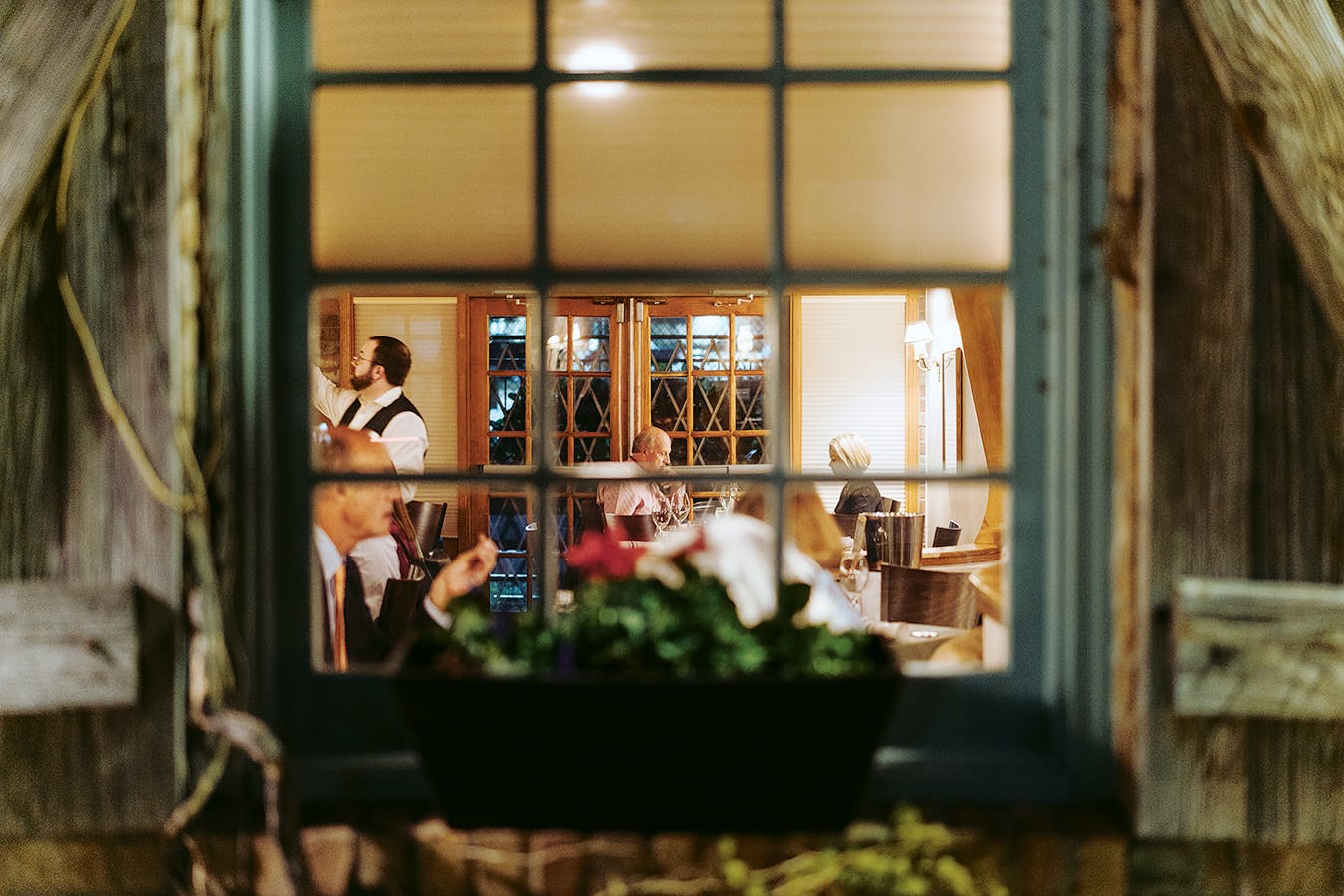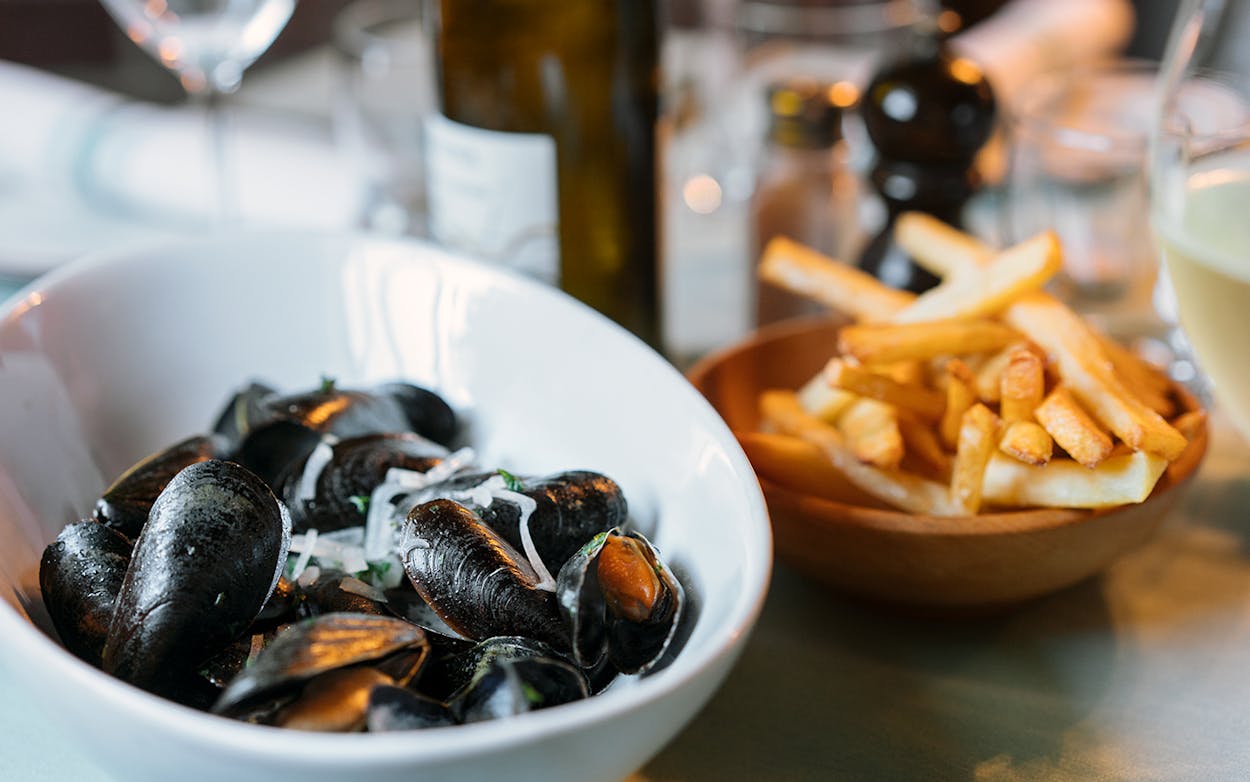When was the last time I ordered escargots? Ten years ago? Fifteen? In the dim, misty past, when the national fine-dining revolution was just reaching Texas (i.e., the seventies and eighties), snails were considered daring and sophisticated. But way too often they were easily mistaken for pencil erasers and over time became rather passé. But there I was with friends at Saint-Emilion, a bastion of French cuisine and a stalwart of Fort Worth’s dining scene for 33 years. If snails had half a chance of being done right, it was here. Yes, we’ll have the snails! In due course, a shiny copper gratin pan arrived, wisps of steam rising from a shallow pool of beef consommé and finely chopped mushrooms. Under a veil of melted Gruyère was a covey of escargots, scandalously sans shells and as fat and sassy as Raphael’s cherubs. I popped one in my mouth. When the ensuing flurry of forks subsided, one friend dabbed her lips with a napkin and remarked, “If you must eat a garden pest, this is the way to do it.”
My last visit to Saint-Emilion was eighteen years ago. The vine-covered stone cottage had occupied a revered place in Fort Worth since it was founded by restaurateur Bernard Tronche, in 1985. At first it was a simple French bistro, a place for classics like coq au vin and pâté. But it had gradually grown ambitious and expensive. There were those—me among them—who grumbled that it had also grown stodgy. But there was no arguing with success. Of the four fabled French restaurants that once graced the Metroplex—Calluaud’s, Jean Claude, Michel, and Saint-Emilion—it was the only one still standing.
A little over a year ago, Tronche surprised many when he announced that he was closing the cottage for renovations and moving his French fine-dining concept to a larger, contemporary building three blocks away. Although the restaurant would feature Saint-Emilion’s menu, it would have a new name: Paris 7th, for its location on Seventh Street (it’s also a nod to that storied neighborhood in the City of Lights, the Seventh Arrondissement). Meanwhile, at the old space, which would retain the Saint-Emilion name, Tronche replaced the ancient carpet with wide plank floors and gave the walls a country-style troweled finish. Out went the costly wines and elaborate dishes. He had blown the dust off the last quarter century and returned Saint-Emilion to the cozy, casual French bistro it had been at the beginning.
On my first visit back, a friend and I stood at the door, looking for our two other dining companions, who had already arrived. It didn’t take long to spot them at a small, linen-clad table against the wall. “I need a drink,” I said as I sat down and started flipping through the menu. But as soon as I saw the wine list, I lost all interest in a gin and tonic. Some of the mostly European bottles came from vineyards I knew. But there were also many from small, relatively obscure wineries emphasizing organic and sustainable practices. And the values were impressive. There were even two cheekily labeled “Cheapest Red on the List” and “Cheapest White on the List.” Each was $5 by the glass and $19.50 by the bottle. They would have been a bargain at twice the price.


After being so impressed by the snails, we went with another classic, gnocchi à la parisienne, and again, the kitchen delivered. Dusted with snippets of parsley, the heavenly little dumplings were ridiculously airy and seared on the outside to a toasty brown. Next, looking for something lighter, we asked our waiter about salads. He suggested the baby beets with chèvre. I resisted—the dish is such a cliché—but he was so articulate that I relented. The endorsement was spot-on. The roasted red and yellow beets were earthy-sweet, the creamy goat cheese studded with chopped almonds and nuggets of dried apricot. (Talking to Tronche later, I mentioned that our waiter had been very well-informed. He laughed. “He should be,” he said. “He’s a chef.” Faced with the labor shortage afflicting restaurants nationwide, Saint-Emilion now hires cooks and cross-trains them to wait tables. When someone calls in sick, it’s not such a crisis.)
If you’re not famished, you can do quite well here with seafood as a main course. The fish of the day is available in classic preparations like meunière and amandine. Our deftly cooked filet of cod dijonnaise had three large shrimp perched on top. Even better was the bowl of generously sized black mussels in a gewürztraminer broth. (If only the sliced baguette alongside had been buttered and toasted, it would have been perfect.)
If you are ravenous, the Basque chicken is the thing. We ordered the dish and were rewarded with a pair of moist thighs covered in tendrils of sautéed bell peppers and onion in a suave white wine sauce. But as hefty as they were, they were dwarfed by the beef filet in a green-peppercorn sauce. For a moment after our waiter placed it on the table, I was afraid he had delivered the wrong steak because it was so much larger than a typical filet. But it was in fact the medium-rare cut we had ordered, awash in cognac cream.

After overindulging in starters and generous entrées, we had little space for sides. Somehow, though, we had room for three desserts. The strawberry tart was the most stylish but a little boring. Better was the tarte tatin, its apple topping cooked to a delicious mush atop a sweet pastry crust. Best of all? A fragile, perfect crème caramel, fragrant with vanilla under the scorched-sugar glaze.
Saint-Emilion is a restaurant where the owner, not the chef, rules the roost. If Tronche isn’t schmoozing with customers, he might be serving a plate or helping clear a table. He can cook too—he was a chef early in his career. He is the definition of the genial host.
I had come to Fort Worth to check up on the local dining scene, expecting that I would—as usual—write about a new place where the chefs were experimenting, mixing and matching cuisines, and generally breaking rules. The last thing I expected was to be taken with the reboot of a three-decade-old French bistro. But what I loved about Saint-Emilion was precisely that it is not going for shock and awe. Its goal is the excellent execution of a classic body of work. Come to think of it, that may be the most radical thing I’ve experienced in ages.
Saint Emilion
3617 W. Seventh, Fort Worth
D Tue–Sat.
$$$
Opened March 8, 1985; reopened October 30, 2018
This article originally appeared in the January 2019 issue of Texas Monthly with the headline “A French Classic Returns to Its Roots.” Subscribe today.
- More About:
- Pat’s Pick
- Fort Worth









